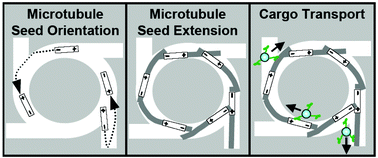Abstract
Nature uses networks of oriented filaments to guide

- This article is part of the themed collection: Cells and proteins at interfaces
Maintenance work is planned for Wednesday 1st May 2024 from 9:00am to 11:00am (BST).
During this time, the performance of our website may be affected - searches may run slowly and some pages may be temporarily unavailable. If this happens, please try refreshing your web browser or try waiting two to three minutes before trying again.
We apologise for any inconvenience this might cause and thank you for your patience.
* Corresponding authors
a
Center for Nanotechnology and Department of Bioengineering, University of Washington, Box 351721, Seattle, Washington 98195, USA
E-mail:
bdoot@u.washington.edu
b
Department of Materials Science and Engineering, University of Florida, 160 Rhines Hall, Gainesville, Florida 32611, USA
E-mail:
hhess@mse.ufl.edu
c
Institute for Biologically Oriented Materials, Department of Materials, Swiss Federal Institute of Technology, ETH Zurich, Hönggerberg, Zürich, Switzerland
E-mail:
viola.vogel@mat.ethz.ch
Fax: 41 44 632 10 73
Tel: 41 44 632 08 87
Nature uses networks of oriented filaments to guide

 Please wait while we load your content...
Something went wrong. Try again?
Please wait while we load your content...
Something went wrong. Try again?
R. K. Doot, H. Hess and V. Vogel, Soft Matter, 2007, 3, 349 DOI: 10.1039/B607281J
To request permission to reproduce material from this article, please go to the Copyright Clearance Center request page.
If you are an author contributing to an RSC publication, you do not need to request permission provided correct acknowledgement is given.
If you are the author of this article, you do not need to request permission to reproduce figures and diagrams provided correct acknowledgement is given. If you want to reproduce the whole article in a third-party publication (excluding your thesis/dissertation for which permission is not required) please go to the Copyright Clearance Center request page.
Read more about how to correctly acknowledge RSC content.
 Fetching data from CrossRef.
Fetching data from CrossRef.
This may take some time to load.
Loading related content
